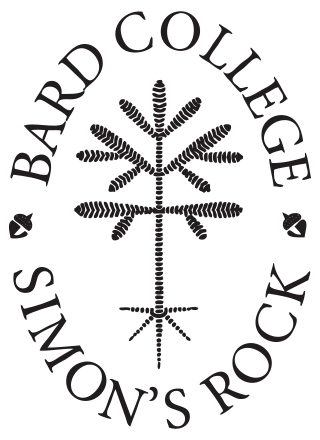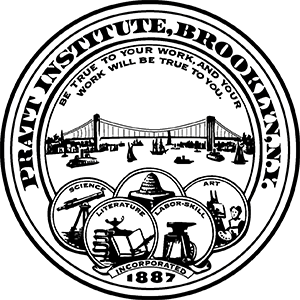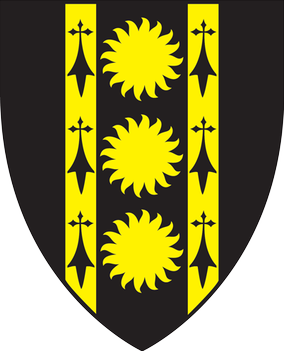
Bard College at Simon's Rock is a private liberal arts college in Great Barrington, Massachusetts. It is part of Bard College in Annandale-on-Hudson, New York.

Greensboro College is a private college in Greensboro, North Carolina. It is affiliated with the United Methodist Church and was founded in 1838 by Rev. Peter Doub. The college enrolls about 1,000 students from 32 states, the District of Columbia, and 29 countries.

Emerson College is a private college with its main campus in Boston, Massachusetts. It also maintains campuses in Hollywood, Los Angeles, California and Well, Limburg, Netherlands. Founded in 1880 by Charles Wesley Emerson as a "school of oratory," the college offers more than three dozen degree and professional training programs specializing in the fields of arts and communication with a foundation in liberal arts studies. The college is one of the founding members of the ProArts Consortium, an association of six neighboring institutions in Boston dedicated to arts education at the collegiate level. Emerson is also notable for the college's namesake public opinion poll, Emerson College Polling.

The University of Regina is a public research university located in Regina, Saskatchewan, Canada. Founded in 1911 as a private denominational high school of the Methodist Church of Canada, it began an association with the University of Saskatchewan as a junior college in 1925, and was disaffiliated by the Church and fully ceded to the university in 1934; in 1961 it attained degree-granting status as the Regina Campus of the University of Saskatchewan. It became an autonomous university in 1974. The University of Regina has an enrolment of over 15,000 full and part-time students. The university's student newspaper, The Carillon, is a member of CUP.

St. Lawrence University is a private liberal arts college in the village of Canton in St. Lawrence County, New York. It has roughly 2,100 undergraduate and 100 graduate students.

Hobart and William Smith Colleges are private liberal arts colleges in Geneva, New York. They trace their origins to Geneva Academy established in 1797. Students can choose from 45 majors and 68 minors with degrees in Bachelor of Arts, Bachelor of Science, Master of Arts in Teaching, Master of Science in Management, and Master of Arts in Higher Education Leadership.

St. Thomas Aquinas College (STAC) is a private college in Sparkill, New York. The college is named after the medieval philosopher and theologian Thomas Aquinas. It was founded by the Dominican Sisters of Sparkill, whose headquarters are in the town. The college offers 35 majors across three schools: Arts and Sciences, Business, and Education.

Pratt Institute is a private university with its main campus in Brooklyn, New York. It has a satellite campus in Manhattan and an extension campus in Utica, New York at the Munson-Williams-Proctor Arts Institute. The school was founded in 1887 with programs primarily in engineering, architecture, and fine arts. Comprising six schools, the institute is primarily known for its programs in architecture, graphic design, interior design, and industrial design.

Glendon College is a public liberal arts college in Toronto, Ontario, Canada. Formally the federated bilingual campus of York University, it is one of the school's nine colleges and 11 faculties with 100 full-time faculty members and a student population of about 2,100. Founded as the first permanent establishment of York University, the school began academic operation under the mentorship of the University of Toronto in September 1960. Under the York University Act 1959 legislation, York was once an affiliated institution of the University of Toronto, where the first cohort of faculty and students originally utilized the Falconer Hall building as a temporary home before relocating north of the St. George campus to Glendon Hall — an estate that was willed by Edward Rogers Wood for post-secondary purposes.

Merrill College is a residential college at the University of California, Santa Cruz. The theme of the college, and the name of its freshman core course, is "cultural identities and global consciousness."

Kent School is a private, coeducational, college preparatory boarding school in Kent, Connecticut, established by Frederick Herbert Sill in 1906. It is affiliated with the Episcopal Church of the United States. It has a long history as an "elite school, not a school for elites," and innovated the sliding-scale tuition model in the early 20th century.

Pierson College is a residential college at Yale University in New Haven, Connecticut. Opened in 1933, it is named for Abraham Pierson, a founder and the first rector of the Collegiate School, the college later known as Yale. With just under 500 undergraduate members, Pierson is the largest of Yale's residential colleges by number of students.

North Campus is a mostly residential section of Cornell University's main campus in Ithaca, New York. It includes the neighborhoods located north of Fall Creek. All freshmen are housed on North Campus as part of Cornell's common first-year experience and residential initiatives.
The main campus of Virginia Tech is located in Blacksburg, Virginia; the central campus is roughly bordered by Prices Fork Road to the northwest, Plantation Road to the west, Main Street to the east, and U.S. Route 460 bypass to the south, although it also has several thousand acres beyond the central campus. The Virginia Tech campus consists of 130 buildings on approximately 2,600 acres (11 km2). It was the site of the Draper's Meadow massacre in 1755 during the French and Indian War.

The Massachusetts Institute of Technology occupies a 168-acre (68 ha) tract in Cambridge, Massachusetts, United States. The campus spans approximately one mile (1.6 km) of the north side of the Charles River basin directly opposite the Back Bay neighborhood of Boston, Massachusetts.

The Danforth Campus is the main campus at Washington University in St. Louis. Formerly known as the Hilltop Campus, it was officially dedicated as the Danforth Campus on September 17, 2006, in honor of William H. Danforth, the 13th chancellor of the university, the Danforth family and the Danforth Foundation. Distinguished by its collegiate gothic architecture, the 169-acre (0.68 km2) campus lies at the western boundary of Forest Park, partially in the City of St. Louis. Most of the campus is in a small enclave of unincorporated St. Louis County, while all the campus area south of Forsyth Boulevard is in suburban Clayton. Immediately to the north across Forest Park Parkway is University City.
Housing at Smith College is provided for students to live in while completing their studies. Smith requires most undergraduate students to live on-campus in order to aid social cohesion.

West Campus is part of Duke University's campus in Durham, North Carolina. West Campus, along with East Campus, make up most of Duke's main campus. The campus follows the Collegiate Gothic architecture style, inspired by the mid-18th century Gothic Revival style, making it distinct from East Campus. This was in a similar set-up as Cornell University's West Campus built a decade prior.
Northern Vermont University (NVU) was a public university in Johnson and Lyndon, Vermont. It was established in 2018 by the unification of the former Johnson State College and Lyndon State College. The university offered over 50 Bachelor's degree programs and Master's degree programs. On July 1, 2023, its two locations became campuses of the newly formed Vermont State University.












































